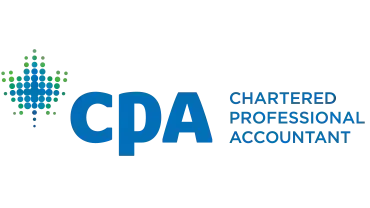Insights & Advice
Frequently Asked Questions
How do I operate as a Sole Proprietor?
Operating as a sole proprietor means that an individual is conducting a business in their own name and is personally responsible for all aspects of the business. Income and expenses are reported on your personal tax return using form T2125.
Personal tax rates operate on a bracket system, with different brackets for provincial and federal taxes. For instance, in 2024 if your taxable income is $128,000, roughly the first $15,000 is tax-free, and the subsequent amounts are taxed at varying rates. The highest combined tax rate in Ontario for 2024 is 53.53%.
Filing Deadlines
Sole proprietors must file their personal tax returns by June 15, with any amounts owing due by April 30.
Instalments may be required if the prior two year-ends' tax balances exceeded $3,000.
How do I operate out of a Corporation?
A Corporation offers small business owners the opportunity to benefit from lower tax rates.
Deciding when to incorporate a business depends on when there is overall tax savings for you and your family.
Example:
Let's examine the financial dynamics of the Adams family, detailing their annual personal expenses and income scenarios.
Scenario 1: Meeting Basic Expenses
- The family needs $134,000 annually for living expenses.
- Mr. Adams, with a T4 job, earns $100,000. After taxes, he has $74,000.
- Additional $60,000 is required for expenses.
- Mrs. Adams, a sole proprietor real estate agent, earns $110,000, incurs $25,000 in expenses, and has $61,000 after taxes.
- Combined, they have $135,000, just enough for living expenses.
Scenario 2: Achieving Savings
- The family needs $134,000 annually for living expenses.
- Mr. Adams' T4 job income increases to $120,000, leaving $85,500 after tax.
- Additional cash needed for expenses decreases to $48,500.
- Mrs. Adams' income rises to $120,000 with $30,000 in expenses, resulting in $65,000 after taxes.
- Combined, they have $150,500, creating $16,500 in savings.
Scenario 3: Corporation: Boosting Savings and Investment Potential
- Mrs. Adams, now operating from a corporation, earns $120,000 with $30,000 in expenses.
- Corporate taxes on net income of $90,000 amount to $10,980, leaving $79,020 in the corporation.
- A dividend of $52,000 is paid, incurring $3,342 in personal taxes for Mrs. Adams.
- After taxes, she receives $48,658, enabling $27,000 in savings and investment from the corporation.
In summary, by incorporating, the Adams family not only meets living expenses but also generates substantial savings/deferral and investment opportunities.
Tax rules and filing requirements for a Corporation
- The year-end of a corporation is established upon filing the first corporate tax return.
- For tax planning purposes, we always select a month end between July and November.
- Corporate tax filings are done on a T2 return.
- The T2 is due 6 months after the year end.
- Instalments are required if the year-end tax balance exceeds $3,000, based on the prior year's tax amount.
- Any increase or decrease in taxable income will result in an amount owing or refund after instalments. If an additional amount is owing, payment is due 3 months after the year end.
- For newly incorporated companies, instalments are not required. It is advisable to newly incorporated companies to keep a savings account where 7-10% of income collected goes to cover the anticipated income tax liability. The percentage depends on how much expenses the company will have. If the expenses are minimal then you will want to save 10%.
What is an HST account?
The Harmonized Sales Tax (HST) is a crucial aspect for small business owners. Once sales exceed $30,000, collecting and remitting HST becomes mandatory. Two methods, the Long Method and the Quick Method, are available for calculating and remitting HST.
The Long Method:
- Track and remit the difference between HST collected and Input Tax Credits (ITCs) spent.
- ITCs refer to the HST you spend on your expenses
- Example is a real estate agent who makes $100,000 in commissions. They will collect $100,000 plus $13,000 in HST.
- This agent has $33,250 of expenses of which $28,250 include HST paid. (Note: not all expenses are HST applicable such as insurance and bank charges). The result being $25,000 of expenses have ITC’s. The result is, ITCs paid were $3,250 ($25,000 x 13%)
In this example, HST payable would be $9,750. ($13,000 - $3,250)
The Quick Method
- A simplified approach is available for smaller businesses with total income plus HST collected under $400,000.
- A standard rate of 8.8% is applied to the total amounts collected, including HST, to report the HST collected amount.
- ITCs are limited to $300 plus any ITCs on capital items purchased
- Example: A real estate agent who makes $100,000 in commissions. They will collect $100,000 plus $13,000 in HST.
With $113,000 collected, the HST return would report $9,944 collected, less $300 in ITCs, resulting in a net HST amount owing of $9,644.
Helpful Hints
- For companies with higher revenue and minimal expenses with HST, the quick method may be preferable.
- The savings noted above $106 ($9,750 – $9,644) is included in your income for income tax purposes.
- Using the quick method often gets you out of the chance of an HST audit as CRA does not need to verify any ITC’s declared.
Reporting Periods and Instalments
- CRA prefers annual filings, but once sales exceed $1,500,000, quarterly filings are required, and monthly filings are necessary beyond $6,000,000.
- Corporate annual filers follow the reporting period, with the HST return due three months after.
- Instalments are required to be paid during the year and are based off the prior year’s filings. Instalments are deducted from the current year’s filing and any increase or decrease in the amounts owing is due on the original dates noted above.
- For newly incorporated companies, instalments are not required. It is advisable to newly incorporated companies to keep a savings account where 9-10% of income collected goes to cover the anticipated HST liability.
- Late filing penalties are 5% of the amount owing and for repeat offenders it is 10% of taxes owing.
- If you are a sole proprietor your reporting period will follow the calendar year.
How to Set Up Banking and Credit Cards?
Whether you're a sole proprietor or operating through a corporation, maintaining one dedicated business bank account and credit card exclusively for business purposes is crucial. This streamlines the bookkeeping process by separating personal and business transactions. Not only does this simplicity benefit your day-to-day operations, but it also proves advantageous during CRA audits, ensuring clarity without personal transactions being associated with the business.
Helpful Hints
- For corporate operations, bring your articles of incorporation when opening a corporate bank account.
- Transfer money over from your business account to personal account to pay for personal items. These transfers will be adjusted for when doing compensation planning for dividends vs. salary.
- The credit card need not be a corporate one; it just needs to be solely dedicated to the corporation.
- Keep track of any expenses not covered by these designated accounts.
Should I use Bookkeeping Forms or Accounting Software?
Starting Out or Using Quick Method for HST:
- If you're just beginning or have minimal expenses, and you use the quick method for HST, using a standard form for tax filing purposes could be suitable.
- Download your banking and credit card transactions to an Excel file annually, categorize them by expense, and summarize revenue and expenses on an income statement.
QuickBooks Online (QBO) for More Complex Needs:
- QuickBooks Online is ideal for businesses with more transactions, numerous expenses, and those using the long HST method or aiming for enhanced organization.
- Set up an account with Intuit for QBO, linking your bank and credit card accounts. With a click, QBO will pull in all transactions.
- Allocate each line item to a revenue or expense account, and QBO learns rules to simplify future bookkeeping.
- Takes approximately 15 to 30 minutes per month, providing efficient and organized financial tracking.
- Downsides include a monthly subscription fee, but the benefits, such as attaching receipt images to transactions for easy retrieval during audits, often outweigh the cost.
What is CRA’s Policy on Keeping Receipts?
- Generally, you must keep your receipts for 6 years from filing
- The CRA accepts electronic records, but businesses should ensure that they are reliable and easily accessible for review by the tax authorities.
- If you use a personal vehicle for business travel and plan to claim mileage expenses, maintaining a mileage log is important. The log should include details like the date, starting and ending locations, purpose of the trip, and the number of kilometers traveled. (Hint: Quickbooks Online has a function to track KM’s driven for business)
- For meals and entertainment, clearly indicate the business purpose of the meal and or event. Include information about the individuals involved, the nature of the business discussion, or the reason for the meal in relation to your business activities.
What expenses can I deduct?
Current Expenses:
- These are regular, recurring costs like dues, bank charges, and cell phone.
- Deductible from income, reducing taxable amount.
Capital Expenses:
- Capital assets in a corporation may include items such as office furniture, computer equipment, machinery, auto or other tangible assets used in the business.
- The cost of acquiring these capital assets is typically treated as a capital expense which means it is not deducted from commission income.
- Companies are able to claim depreciation on their capital assets. The Capital Cost Allowance (CCA) is the mechanism by which a business can deduct a portion of the capital asset's cost over its useful life. This amount is deducted annually when filing taxes.
Deductible Expenses:
Some common expenses for businesses are as follows:
Capital Cost Allowance (CCA):
- Capital cost allowance or CCA is a tax expense that you can elect to take annually on property, equipment and other tangible and intangible assets.
Marketing/Advertising:
- Flyers, signage, radio ads, paid sponsorship, face book ads
Meals and Entertainment:
- Meals and entertainment where you are with a prospective new client is only 50% tax deductible.
- The person you met, date, reason you met all has to be indicated on the back of the receipt.
- Restaurant meals, hockey tickets, etc. for entertaining clients
Professional Fees:
- Accounting, legal, consulting costs
Memberships/Dues/Licenses (continuing educations):
- Union or association dues
Insurance:
- Business insurance.
Auto
Option A:
- Auto can be calculated based on a prorated amount of your total kilometers driven for the year vs your business kilometers driven during the year.
- You must know your starting and ending odometer reading for the year
- You must keep an auto log for business use of vehicle
- Fuel and oil, interest on financing, insurance, licensing, maintenance and repairs, lease payments are all allowable deductions.
- Allowable lease amounts are set annually per CRA. For 2024 the amount is $1,050 per month.
- You can use this method for sole proprietor or a corporation.
Example:
- Total km’s driven in year was 24,000
- Included in this 24,000 was 10,000 of business use
- Auto expenses for the year as noted above were $18,000
- The allowable auto expense is 10,000/24,000 = 41.7% x 18,000 = $7,500
Option B
- To simply things CRA will allow you to just charge a rate per km
- For 2024 the allowable rates are $0.70 per kilometer for the first 5,000 kilometers and $0.64 per kilometer after that.
Example:
- Total km’s driven in year was 24,000
- Included in this 24,000 was 10,000 of business use
- (5000 x .70) + (5000x.64) = $6,700
The main difference on the above 2 options is the tracking of all the expenses and record keeping. In option A you will have an extra $800 of expenses to deduct from your income but will have a lot more to keep track of accounting and records wise.
Home Office:
- Home office is calculated based on a prorated amount from your home office to your whole house expenses.
- Heat, electricity, insurance, maintenance, mortgage interest and property taxes are all included in the calculation.
Example:
- House is 3000 square feet and you have a home office
- Office is 12 ft x 12 ft or 144 sq feet.
- Home expenses as noted above equal $40,000
- The allowable deduction is 144/3000 = 0.048 x 40,000 = 1,920
Other common expenses that are deductible from income for small business owners are as follows:
- Supplies
- Telephone and communication
- Computer and related expenses
- Salaries
- Professional fees (legal and accounting)
- Bank fees and credit card interest
- Travel
- Conventions, seminars, etc.
What is the best way to pay myself as a sole proprietor?
Income earned as a sole proprietor is directly declared on your personal tax return.
Should I pay myself a salary or a dividend as a corporate owner?
In the realm of business ownership, understanding how to pay yourself is crucial, especially when operating within a corporation. Here, we break down the options for compensation – salary vs. dividends – and discuss key factors in making this decision.
Essential Information
- Salary is for those actively involved in company work.
- Dividends represent a return on the invested capital.
- CRA aims for equal taxation results (integration) regardless of payment method.
- Tax rates may result in slight differences between dividend and salary taxation.
Note: Owners (shareholders) of a corporation can elect to take a dividend and not take a salary from the corporation.
Salary:
- Contributes to CPP (Canada Pension Plan) twice.
- CPP benefits in retirement.
- Allows RRSP contributions.
- Eligible for deductions like childcare.
- Involves detailed payroll accounting and CRA scrutiny.
- Requires T4 issuance.
Dividends:
- Paid from retained earnings.
- T5 slip issuance.
- Simplified accounting.
- Personal responsibility for instalments.
- Simplicity but lacks certain deductions like childcare.
- No CPP contribution, impacting retirement benefits.
Factors in Decision Making:
- Future retirement tax bracket.
- Personal write-offs, e.g., childcare.
- Utilization of extra annual income.
- Retirement plans and CPP necessity.
Navigating the salary vs. dividends decision involves careful consideration of personal circumstances, future plans, and financial objectives. Understanding CPP implications and planning for deductions contribute to informed choices aligned with your financial goals.
Helpful Hints:
During the initial years, consider opting for dividends to alleviate upfront Canada Pension Plan (CPP) costs and channel funds back into the company. As your business gains traction and the financial load eases, you can seamlessly transition to a salary structure, including CPP contributions.
JPM Services
Keep more of your hard earned money.
Information is one of the biggest keys to success when it comes to owning and operating a small business.



